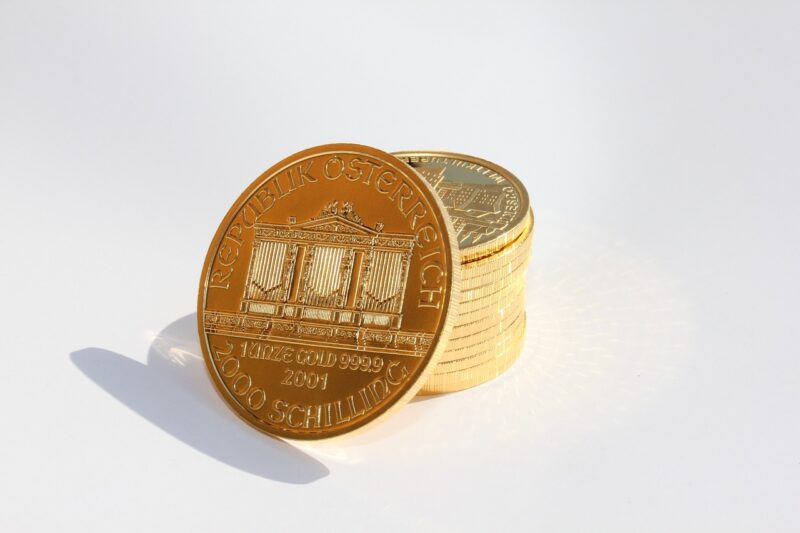Why Gold Is the Ultimate Symbol of Wealth and Power in Cultures Around the World
November 14, 2024

Gold has captivated humanity for thousands of years and remains a potent symbol of wealth and power across cultures. Its unique properties, adaptable nature, and historical significance have solidified its status as an indispensable part of human civilization.
Gold’s allure can be traced back to ancient civilizations, where it was revered not just for its beauty, but also for its scarcity and utility. Its intrinsic value and rarity have made it a desirable commodity that transcends borders and epochs. In this article, we will delve into the multifaceted reasons why gold has secured its place as a staple of wealth and power around the globe.
1. Historical Significance of Gold
Gold is often referred to as the “first currency”; ancient Egyptians, Mesopotamians, and Romans all used it as a medium of exchange. The pharaohs of Egypt adorned themselves with gold jewelry, believing it to be a channel to divine favor. In the context of the Roman Empire, gold coins were a method to consolidate power and assert dominance over conquest territories.
As time progressed, gold did not lose its luster; rather, it became synonymous with wealth accumulation and social status. The phrase “the golden age” is often used to describe times of prosperity influenced heavily by gold’s monetary role.
2. Gold as a Universal Currency
Gold has been a universally accepted medium for trade, serving as a currency across different societies and cultures. Unlike fiat money, which varies depending on governmental regulations and conditions, gold maintains an intrinsic value that is recognized globally.
The Gold Standard, which governed global currency values through gold reserves for many years, affirms gold’s potent role in economic stability. Even in the contemporary context, with various crises and inflation impacting economies, gold remains a sought-after asset that people turn to in tumultuous times.
3. Symbolism in Various Cultures
Different cultures celebrate gold for its unique qualities and symbolic essence. Let’s explore a few compelling examples:
– Asia: In many Asian cultures, especially China and India, gold is revered as a symbol of wealth and prosperity. It is customarily bestowed during weddings, festivals, and special occasions as a means to signify good fortune and heritage.
– Africa: In various African cultures, gold is often seen as a divine gift and associated with spirituality. The Akan of Ghana, for instance, utilized gold dust in rituals, offering it to the gods during ceremonies.
– Mesoamerica: Ancient Mayans and Aztecs viewed gold as “the sweat of the sun” and crafted intricate gold artwork and artifacts. Gold held deep religious significance and was often included in burial rituals.
This cultural reverence underscores how gold transcends mere wealth, symbolizing integrity, purity, and celebration.
4. Physical Properties of Gold
Gold’s unique physical properties—including its malleability, ductility, and resistance to corrosion—allow it to be crafted into intricate designs, making it highly desirable for jewelry and artwork. The ability to form complex shapes and structures without losing its integrity ensures its longevity and timeless appeal.
Gold does not tarnish or rust, maintaining its brilliant shine and allure over time. Consequently, it remains a preferred choice for heirloom jewelry and artifacts that tell stories through the ages.
5. Investment and Economic Power
In modern economies, gold is a key asset for investors and a hedge against inflation. During uncertain times, individuals invest in gold to safeguard their wealth, leading to a surge in gold prices when the economy falters.
Countries hold gold reserves as an integral part of their financial systems. These holdings affirm economic power and stability, as they provide a system of value against the national currency. Gold’s liquidity—easy to buy and sell—enhances its role as a safe haven during financial downturns.
6. Gold in Art and Literature
Art and literature throughout history are adorned with references to gold, embodying its qualities and the values it represents. From the mesmerizing gold leafing in Renaissance art to the compounding of the “golden rule” in ethics, the symbolism extends across layers of culture.
Authors from Shakespeare to contemporary writers employ gold as a symbol of aspiration, betrayal, or nostalgia, indicating its complex relationships with humanity and ideals.
Conclusion
Gold’s multifaceted roles in history underscore its unparalleled position as a symbol of wealth and power. From ancient civilizations to modern financial systems, it remains a treasured commodity valued for both its beauty and significance. The interplay of cultural meanings, economic implications, and physical properties ensures gold’s lasting legacy as the ultimate emblem of prosperity across the globe.
In a world grappling with various economic challenges, the enduring power of gold continues to shine bright, affirming its status as a timeless symbol of wealth and an investment for the future.







